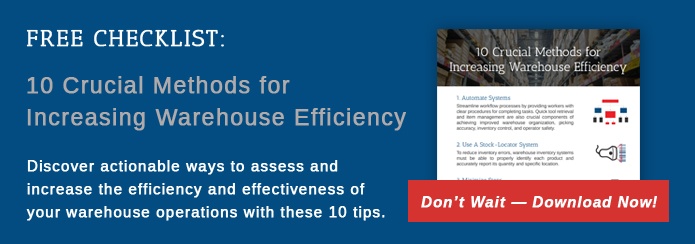 Cycle counting is far superior to physical inventories in most warehouse operations. Instead of shutting down everything once a year to count, the count is done continuously throughout the year to keep inventory numbers more accurate. In addition, a cycle count will tell you if a product needs to be reordered soon, if it is damaged, if it is aging on the shelf, or if it is in the wrong place.
Cycle counting is far superior to physical inventories in most warehouse operations. Instead of shutting down everything once a year to count, the count is done continuously throughout the year to keep inventory numbers more accurate. In addition, a cycle count will tell you if a product needs to be reordered soon, if it is damaged, if it is aging on the shelf, or if it is in the wrong place.
Let's look at some of the best practices in implementing cycle counting in your work operation. These practices should make the transition smoother while also improving warehouse efficiency.
- Use your WMS to help schedule cycle counts for each SKU.
Cycle counting depends on having an accurate, real-time count of all products coming in and going out. The only way to do this is to use an automated warehouse management system that tracks real-time inventory as well as items received and items shipped. This is not possible with a paper inventory or a spreadsheet.
Most modern warehouse management systems integrate easily into the cycle counting process while improving overall warehouse efficiency. They allow you to identify the count frequency and set up a schedule based on that frequency. - Create a cycle count schedule based on risk and value.
Cycle count schedules should address the risk of each product to the company. Some items are high value. Some items have a high turnover rate. Those are the items that pose the highest risk to the company. If an item of high value is lost, it represents a large financial loss to the company. If a significant portion of a high turnover item is missing, it will be impossible to fulfill customer orders.
The highest risk items should be counted more frequently than lower risk items. Many companies implement a three-tiered schedule for cycle counts. The highest risk items are at the top tier. The second tier is for items of moderate risk. The last tier is for items with the lowest risk. - Compare your counts to ensure value accuracy.
One of the many benefits of cycle counting is that you can be kept abreast of the value of what should be on your shelves in real time throughout the year. In a perfect world, all items would be put away and electronically recorded correctly to ensure a constant exact match between physical inventory and theoretical electronic balances in your WMS. However, due to human error, cycle counting must occur on a regular basis in order to compare the real world actual numbers to the theoretical count that exists in the system. If the numbers don't match, count again and take the necessary steps to find where the errors are occurring. - Make warehouse organization improvements to make cycle counting easier.
A disorganized warehouse is going to make cycle counting very difficult to perform efficiently on a regular basis. Make sure your warehouse organization is as good as you can make it. Every product should have a dedicated slot that is clearly labeled and linked to the product in the WMS. Consider adding warehouse equipment like carousels to make cycle counting (and order picking) easier, while also improving warehouse efficiency.
It takes a bit of work to initiate the implementation of cycle counting. But, in the end, when inventory is accurate and operations are running smoothly, the work will be well worth it.




